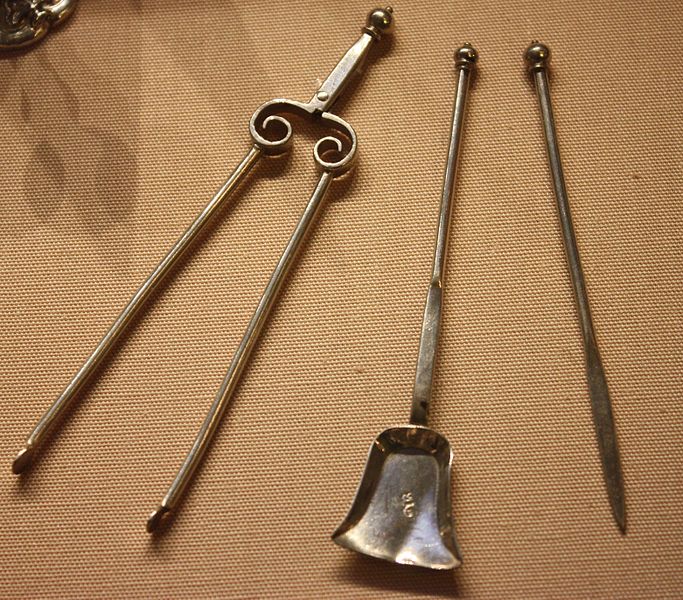
miniature fire tools set from the Victoria and Albert Museum, London. Poker, obviously, on the right
And a poker face usually is quite long, though the face is called after the card game:

painting by C M Coolidge
and not the implement for maintaining a fire.
The purpose of a poker face (that is, one that's deliberately expressionless) is to conceal the value of a player's hand of cards.
Now, people here in Britain tend not to go in for the expression of loud or grand passions, but perhaps the adoption of some simple expression of mild irritation - a faint twitch of half a lip, say, or a mild wrinkling of an eyelid - just might prevent misunderstanding, and in turn this might even steer us away from one or two disastrously explosions of pent-up rage.
Though this, I'm afraid, might be asking too much of long-frozen British facial expressions.
So perhaps a better game for these crowded times just might be Snap.
Thing Not To Have Today: a poker face. The card game poker is possibly named after a similar French game called poque, but that would be quite surprising as the game itself originated in the United States of America. Another theory is that the word comes from the German pochen, to brag: a pochspiel is a bragging game.
Poker itself was invented in the 1820s, perhaps on Mississippi riverboats. The first poker face, however, wasn't described until half a century later.
No comments:
Post a Comment
All comments are very welcome, but please make them suitable for The Word Den's family audience.